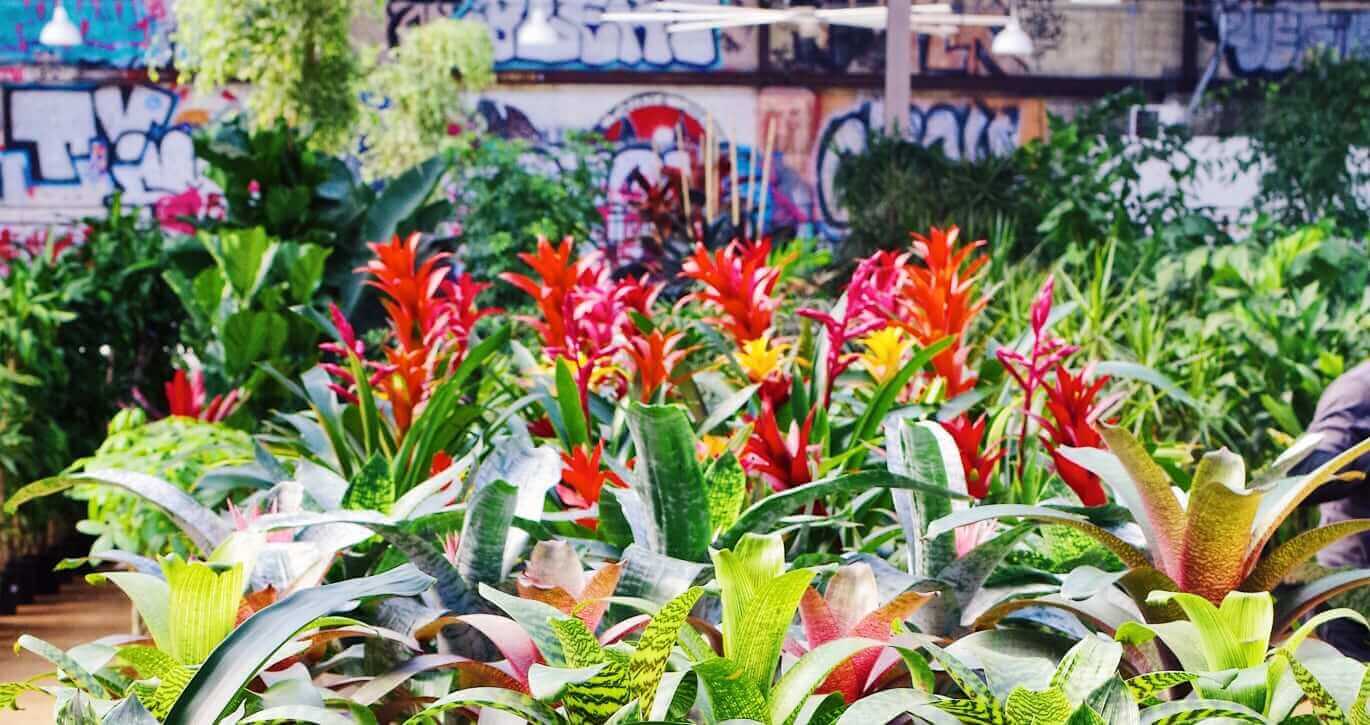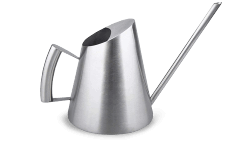A Big Plant Is the Statement Piece
You Didn’t Know You Needed
How to buy a serious plant for your home (and keep it alive)

Statement plants require statement pots. CB2 has a wide range available.
The modern man’s apartment includes a plant. Not just a little potted shrub or tiny succulent on your coffee table or dresser. We're talking about a big plant—the type of plant that people walk into a room and say “woah” when they see it. “Plants used to be more of a table top accessory but not anymore,” says Brianne Bird, the General Manager of Rolling Greens in Los Angeles, a home and garden brand that considers plants to be living art instead of something that simply occupies space. “People are using plants as a major part of their home decor and are planning out the rest of the design of the room around plantscaping.”
As she will tell any customer, plants do not require a green thumb, but they do need a few things to thrive. And she has very specific, very practical advice for ensuring that your statement plant is as happy and healthy as possible.
What to Consider
“Lighting is so important,” Bird says, noting that this is where you begin if you're going to commit your time and resources to a plant. It all starts by looking at the windows in a room. “Most plants want to be in a bright, filtered light,” she explains, noting that this is an environment akin to a greenhouse. Plants want to be near windows because they are guaranteed light. But not all windows are actually functional for plants. For example: “An eighteen inch by two foot window that's above everything and close to the ceiling? Plants are not getting light from a window like that.” Similarly, some plants prefer more filtered light and may be harmed by direct sunlight. “They'll fry almost immediately,” she says.
Know your commitment level

Plants, like people, have specific needs that are best suited for certain lifestyles. Before you start plant shopping, ask yourself “How much care do you want to give?” Once you have a suitable answer—be it wanting to do next to nothing or wanting to take an active role—articulate this information when shopping for a plant. “Some plants can literally thrive on neglect,” she says. “But if you really love that fern look, you're going to run into problems if you travel quite a bit, because those need to be watered a lot more frequently.”
Bring a photo when plant shopping
In Bird's opinion, the best prospective plant parent brings in a photo of their space. “Photos help us see what direction the windows are going and how much light will actually be on the plant,” she says. A photo can help with placing a plant before it arrives and guide you toward plants that can thrive in corners versus closer to a light source. This is important because, after all, a plant is a living architectural form that can reshape your space.
Give your plant a home and don’t move it
It may be tempting to move the green around a room or two, but Bird urges that a place should stay put. “Once a plant is in its happy place, you don't want to mess with it,” she says. “That's how they thrive. They will retaliate and drop their leaves if they have to acclimate to a new environment.”

Be consistent with watering
Plants enjoy being hydrated, consistently. This doesn't mean watering every day but instead a hearty pouring every seven to ten days. Again: this must be consistent. “You have to make sure that a plant isn't being neglected,” Bird says of watering. She notes to monitor how a plant reacts to waterings and making sure that you respond accordingly, specifically in relationship to watering too much or too little. “Listen to them,” Bird adds. “And learn as you go.”
Literally cut the yellow out
If you see parts of a plant yellowing, get rid of these leaves or branches. “Clean it off because the energy in the plant is going to all of that and it's just being wasted,” Bird says. “You want to clean them out, from time to time.” Stay calm with this too: yellowing and turning are natural. They aren't signs of bigger problems. “Your plant isn't dying if one of the leaves is sideways,” Bird adds.
Don’t overthink this, man
If you're stressing over your plant, you're doing it wrong. “Plants should bring you joy and serenity,” Bird says. “If you are freaking out because you didn't get to water it on Sunday, you're kind of going against everything. Just make it into a habit. We take care of the living, breathing things in our lives—so we should take care of plants the same way.”
Advertisement
Ready for a Statement Plant?
Bird has a few recommendations for plants that are easy to maintain in most environments and for most people. Many come in different varieties but behave, roughly, the same, making the toughest choice being aesthetic.

Zamia
“I love this plant because, no matter what you do to it, you get this shiny, waxy leaf,” Bird says of this simple statement plant. “It's really architectural and is always growing up, in a vertical direction.” Bird says that the Zamia tolerates very low lighting and only needs to be watered once a week, making it a very easy, fuss-free plant.

Alocasias
“They are beautiful plants with large foliage,” Bird says. “You get this great, under foliage view of the veins. It's just a spectacular plant.” Bird notes this isn't a plant to be placed in a high traffic area like a dining room because they are sensitive and like to expand. “As it grows, it's going to come out into that space,” Bird says. “If it's in an area where people are going to bump into it, this isn't the best choice for you.”

Dracaena
A taller plant, the joy of the Dracaena is their diversity in species. As Bird mentioned, a few popular varieties are the Dracena Compacta, the Dracena Marginata, the Dracena Pele and the Song of India. "This is a terrific plant because you only have to water once a week," she says. “I water mine every seven to ten days. It's an easy plant that keeps to itself and fills the space. It's a great air purifier too.”

Sansevieria
Like the Dracaena, the Sansevieria comes in a variety of forms and colorations to choose from. They're also a succulent which adds to a more casual way of living. “They can tolerate a little less light,” Bird says. “This is a plant that minds its own business—really good for corners.Ý They're also great for air purifying as well, which makes them ideal for bedrooms.

Ficus Lyrata
“This is the grande dame,” Bird says of the so-called Fiddle Leaf Fig that you have probably seen in many a friend's home. “People love these because they're so architectural,” she says. What makes the Lyrata a bit difficult is that they can be fickle and take some time to acclimate. As Bird has mentioned before, make sure you are regular with such a plant and do not move them. Once they have found their happy place, they are very sensitive when relocated.
This simple, stainless steel watering can holds 32 ounces of water and both the large handle and long, off-set spout make pouring easy and spill-free.
$27.99 by IMEEA







